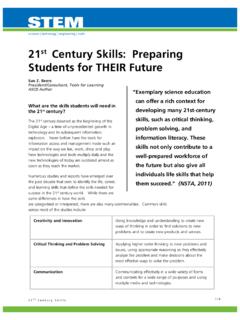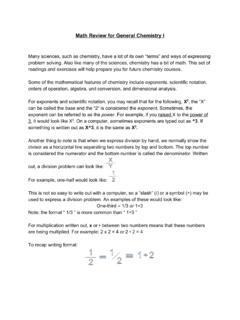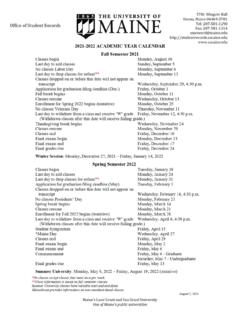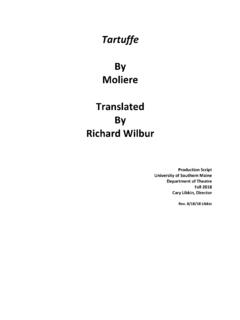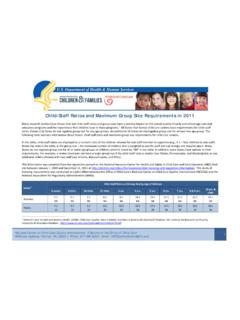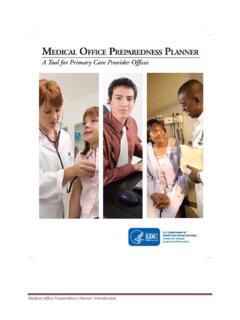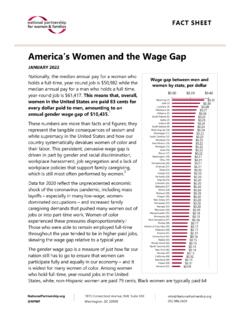Transcription of 21st Century Skills: Preparing - University of Maine
1 Science | technology | engineering | math 21st Century skills 1 / 6 21st Century skills : Preparing Students for THEIR Future Sue Z. Beers President/Consultant, Tools for Learning ASCD Author What are the skills students will need in the 21st Century ? The 21st Century dawned as the beginning of the Digital Age a time of unprecedented growth in technology and its subsequent information explosion. Never before have the tools for information access and management made such an impact on the way we live, work, shop and play. New technologies and tools multiply daily and the new technologies of today are outdated almost as soon as they reach the market.
2 Numerous studies and reports have emerged over the past decade that seek to identify the life, career, and learning skills that define the skills needed for success in the 21st Century world. While there are some differences in how the skills are categorized or interpreted, there are also many commonalities. Common skills across most of the studies include Creativity and Innovation Using knowledge and understanding to create new ways of thinking in order to find solutions to new problems and to create new products and services. Critical Thinking and Problem Solving Applying higher order thinking to new problems and issues, using appropriate reasoning as they effectively analyze the problem and make decisions about the most effective ways to solve the problem.
3 Communication Communicating effectively in a wide variety of forms and contexts for a wide range of purposes and using multiple media and technologies. Exemplary science education can offer a rich context for developing many 21st - Century skills , such as critical thinking, problem solving, and information literacy. These skills not only contribute to a well-prepared workforce of the future but also give all individuals life skills that help them succeed. (NSTA, 2011) science | technology | engineering | math 21st Century skills 2 / 6 Collaboration Wo rkin g with o th ers resp ectfu lly an d effectively to create, u se an d sh are kn o wled g e, so lu tio n s an d innovations.
4 Information Management Accessing, analyzing, synthesizing, creating and sharing information from multiple sources. Effective Use of Technology Creating the capacity to identify and use technology efficiently, effectively and ethically as a tool to access, organize, evaluate and share information Career and Life skills Developing skills for becoming self-directed, independent learners and workers who can adapt to ch an g e, man ag e p ro jects, take resp o n sib ility fo r th eir work, lead others and produce results. Cultural Awareness Developing cultural competence in working with others by recognizing and respecting cultural differences and work with others from a wide range of cultural and social backgrounds.
5 Integrating 21st Century skills with Content These skills are about the thinking processes and behaviors students will use as they learn subject area content and work with others to deepen their understanding of the content. All of the frameworks emphasize the need to ground 21st Century skills in core content, and especially in an interdisciplinary fashion. Organizing instruction around important concepts and big ideas helps students create conceptual structures for storing, retrieving and using information in new and unanticipated ways. As the 21st Century skills are integrated into co n ten t, so me key d esig n p rin cip les include Connecting the content knowledge to real-world applications and problem situations that enable students to see how what they are learning connects with their lives and the world around them.
6 The work that is asked of students must be authentic work that is relevant and that mirrors real life. Emphasizing deep understanding of the learning by focusing on projects and problems that require students to use the content knowledge in new ways and to extend their understanding through collaboration with others. science | technology | engineering | math 21st Century skills 3 / 6 Helping students understand and monitor the thinking processes they are using by including metacognitive activities that ask students to reflect on their use of thinking structures and the effectiveness of the thinking strategies they employed.
7 Using technology to help students access, analyze, organize and share what they are learning and allow students to independently locate appropriate tools for the task. Providing opportunities for students to become creators as well as consumers of published information (Apple, 2008) by providing opportunities for creating and verifyin g th eir o wn en tries in co llab o rative sites an d evalu atin g co n trib u tio n s o f others. Engaging students in solving complex problems that require higher order thinking and application of content and that result in new perspectives and solutions to problems. Providing opportunities for students to work collaborative as they gather information, solve problems, share ideas, and generate new ideas.
8 Developing life and career skills b y creatin g o p p o rtu n ities fo r stu d en ts to b eco me self-directed learners who take responsibility for their own learning and who learn how to work effectively with others. Helping students make connections between subjects, concepts and ideas and with others, including those outside of the classroom. The keys to integrating 21st Century skills into the classroom are application, connections and participation. German psychologist Herman Ebbinhaus first advanced our understanding of learning and retention over 125 years ago. His research showed that retention is very low when there context for the learning and when the learning is not reinforced with practice.
9 Most humans tend to forget 50% of newly learned knowledge in a matter of days or weeks.. meaningful material ( things that make sense because they relate to things we already know) takes only about one tenth the effort to learn and the forgetting is relatively gradual. (Haines, 2006) Infusing 21st Century skills with subject area content, and The highest ranked skills for students entering the workforce were not facts and basic skills ; they were applied skills that enable workers to use the knowledge and basic skills they have acquired. (Key Findings: Are They Really Ready for Work? Conference Board 2006) science | technology | engineering | math 21st Century skills 4 / 6 especially cross-cu rricu lar co n ten t, p ro vid es stu d en ts with stro n g learn in g cap acity an d h elp s them retain the learning for ongoing use.
10 How Should Instruction Change to Prepare Students for Success in the 21st Century ? The 21st Century skills are not really different. We have always wanted students to be creative thinkers and problem solvers who have the skills necessary to function effectively in society and in the workplace. However, the way in which these skills are incorporated in the classro o m an d h o w tech n o lo g y is in teg rated will g reatly ch an g e in stru ctio n . In d eed , with technology, today s classroom transcends physical walls and reaches around the globe. In addition, we need to plan instruction with an understanding of the digital natives (Prensky, 2001) who have grown up in the Digital Age and who expect learning to be interactive, engaging and up-to-date.

